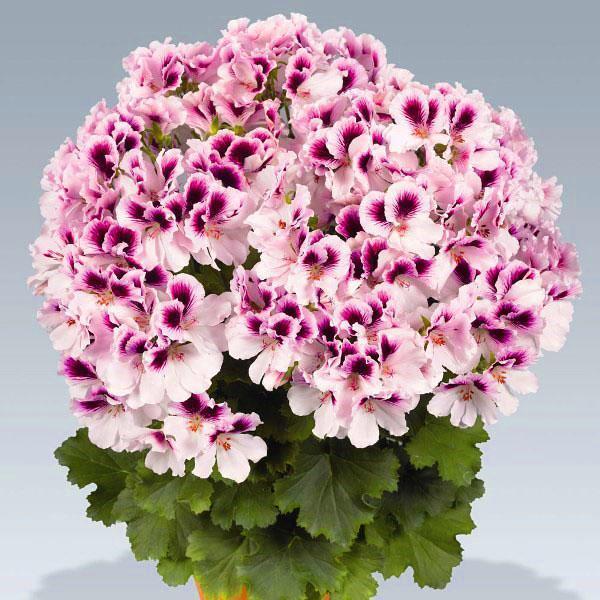Cultivation of royal pelargonium
 Pelargonium - flower, which was grown on the windowsills by our mothers and grandmothers. They called this plant geranium. In nature, the flowers of this plant can be white, red, yellow or purple, but always one color. In the twentieth century, during the period of the greatest development of selection, more than 200 varieties of geraniums were bred. Pelargonium began to be divided into two subspecies: indoor (small-flowered) and royal (large-flowered). Indoor pelargonium is unpretentious to the composition of the soil, but does not like low temperatures. Large-flowered geranium can also be grown at home, but royal pelargonium needs appropriate care.
Pelargonium - flower, which was grown on the windowsills by our mothers and grandmothers. They called this plant geranium. In nature, the flowers of this plant can be white, red, yellow or purple, but always one color. In the twentieth century, during the period of the greatest development of selection, more than 200 varieties of geraniums were bred. Pelargonium began to be divided into two subspecies: indoor (small-flowered) and royal (large-flowered). Indoor pelargonium is unpretentious to the composition of the soil, but does not like low temperatures. Large-flowered geranium can also be grown at home, but royal pelargonium needs appropriate care.
Watering
Royal pelargonium, unlike small-flowered geraniums, does not tolerate direct watering. If water hits the surface of the soil, then the soil is compacted, and the root system of pelargonium begins to rot.
Water the royal geraniums by pouring water into the pan. Then pelargonium will take as much water as the plant needs, and you will not harm its root system. Watering should be carried out when the topsoil dries up.
In the summer, the plant needs abundant watering, in winter, when pelargonium enters a dormant period, watering is reduced. If you flood the flower too much, the leaves turn yellow. Watering should be reduced, and, over time, the color of the leaves will recover.
Temperature regime and feeding
If in winter the temperature in the room where the flower is located will be about 24ABOUTC, then pelargonium will continue to form a green mass and will not form flower buds. Royal pelargonium, unlike room geranium, enters a dormant period in winter. At this time, the growth of green shoots stops, and the pelargonium lays new buds, but for this it needs to create special conditions.
In winter, move the royal pelargonium to the windowsill in the loggia. The temperature on such a balcony will not drop below +10ABOUTC. With this temperature regime, the root system of geranium will not freeze, and the flower will remain dormant until spring and will tie the buds.
To increase the number of buds, royal geraniums are fertilized with potash and phosphorus fertilizers, and during the flowering period, pelargonium is fed with magnesium. Top dressing should be done twice a month. During the spring period, four fertilizing with magnesium-containing fertilizers are made, then they must be stopped.